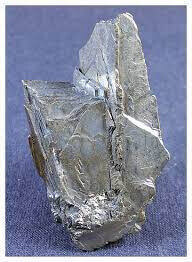
All The Wonders Of Pewter - What is it?

I fell in love with pewter when I first experienced it. I fell in love with the look of it and the fact that it has “substance”. Any item that is made from pewter looks “full-bodied” and feels good in my hands. It can be “silver” and almost “modern-looking” or it can be oxidized and have a darker and aged look, depending on your personal preference, and I truly love that about pewter. The metals used can be mixed in different percentage ratios depending on what is being manufactured, i.e. household items, jewellery, sculptures etc. So, pewter is truly an amazing alloy.
What Is The Main Component Of Pewter ?
Tin is the main component of pewter and is extracted from a mineral called 'Cassiterite', also known or tinstone. Tinstone can be found underground with other mineral deposits. Cassiterite is a heavy, metallic, hard tin dioxide that is the major ore of tin. Even though tin is very malleable, it bends easily under pressure and when it does bend it emits a distinctive sound known as a “tin scream”. Tin is also an optimum heat conductor.
Tin was one of the first metals used by Man
because it can easily worked and extracted.
Man melted it as early as the 6th millennium B.C.,
before he learned how to melt iron.
Tinstone often occurs associated with copper ores,
the alloy of these metals is bronze.
At the present time tin is used extensively
in the manufacture of tinfoil for the preservation of food,
since it is harmless to human health.
Extracted from Minerals And Rocks by Dr Jiri Kourimsky 1975.
We now know that pewter is an alloy of predominantly tin and minor amounts of antimony, copper and bismuth.
Antimony in it's raw form

But, sometimes silver is also added. Copper and antimony act as hardeners and add to the durability of pewter. The melting point of pewter is generally low, but that depends on the exact mixture of metals used.
The Egyptians And The Romans...
The Egyptians loved using pewter and used pewter to make decorative metal items, plates, jugs, cups and candlesticks. Pewter artifacts were found in an Egyptian tomb dating back to 1450 BC. As with the Egyptians, pewter also became very popular among the Romans.
When the Romans left Anglo-Saxon England in the 5th century, the use of pewter just about died.
Beautiful pewter bowls were used by the Egyptians

Fortunately, the Cisterian monks reintroduced the craft in the 12th century and made chalices and spoons for ceremomial use. At that stage, pewter was only within the reach of the wealthy.
In the middle ages, pewter became more and more popular as its versatility was soon recognized by the wider community and could be found as kitchenware and eating utensils in almost every household.
Today, fine crafted jewellery, domestic ware and decorative items are made from pewter and its popularity is growing as more people are realizing that it is not a cheap replacement for silver.
Pewter Baobab Tea Light Holder
Proudly African Pewter

Pewter is a low maintenance material and is easy to keep clean, making it the perfect material for picture frames, vases, sculptures and jewellery. Pewter is also popular among craftsmen and artisans because it doesn’t corrode or rust easily nor does it tarnish like silver. Keeping pewter clean with a soft cloth and protecting it from high temperatures, like dishwashers, will keep your pewter pieces beautiful for years.
Is tin a precious metal?
The precious metals are gold, silver, platinum and palladium. Pewter may not have the metallurgical value of silver or gold, but it can be worth a significant sum depending on its age, condition, and manufacturer. The fact of the matter is, pewter is growing in popularity because people are realizing its worth.
How to Clean Pewter.
Use warm water, soft soap and a soft cloth to dry. Easy peasy!
So, as you can see, pewter is an awesome material to use to manufacture decorative household items, jewellery, sculptures and functional housewares. It is growing in popularity as we are gaining knowledge about its true beauty and worth.
Cheese Knife, Cheese Mice & Potjie Pot Set - Proudly African Pewter


At African Pewter we create our own pewter alloy by combining only pure tin and antimony. Our products are therefore guaranteed lead-free and do not contain copper. We pride ourselves in the loving care that goes into each individual item we mould, cast and fettle to bring to the lover of pewter.
